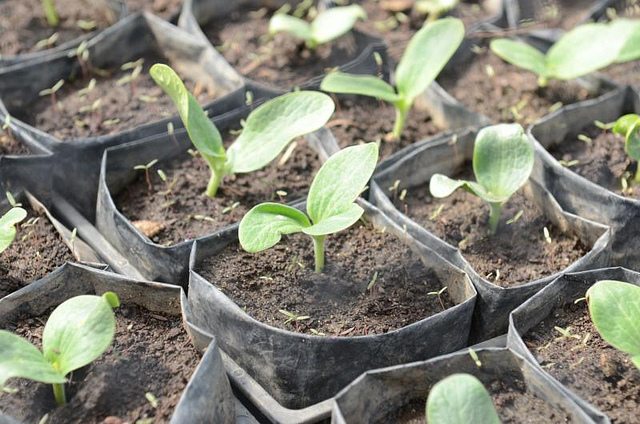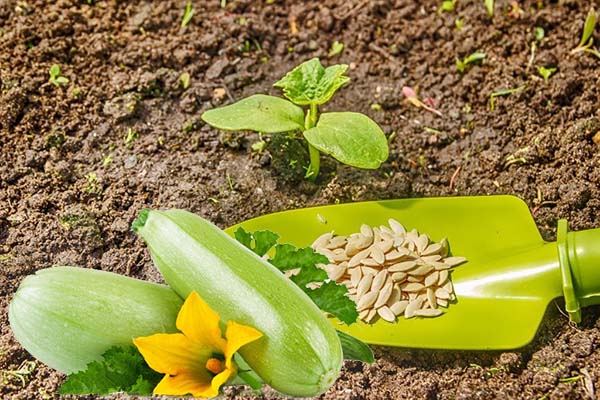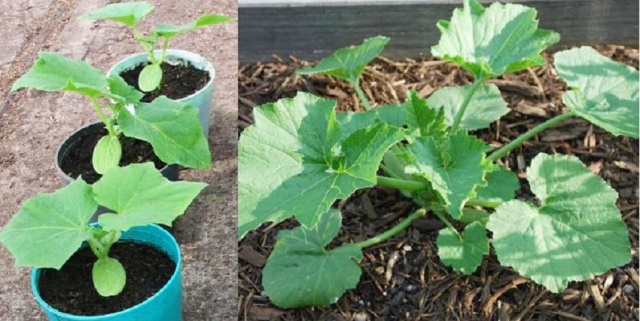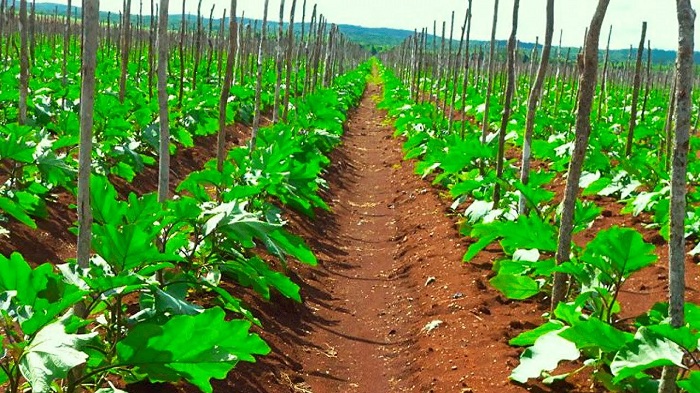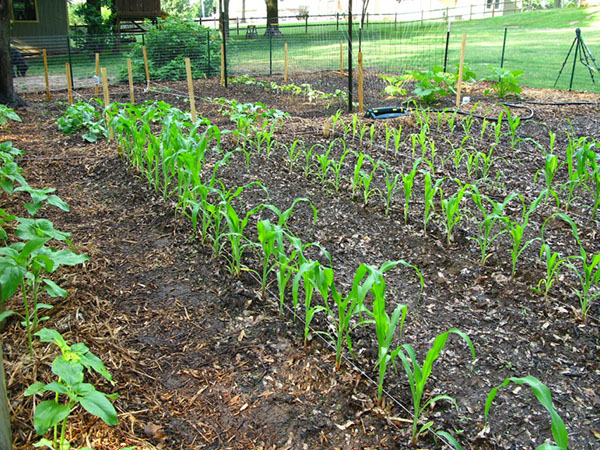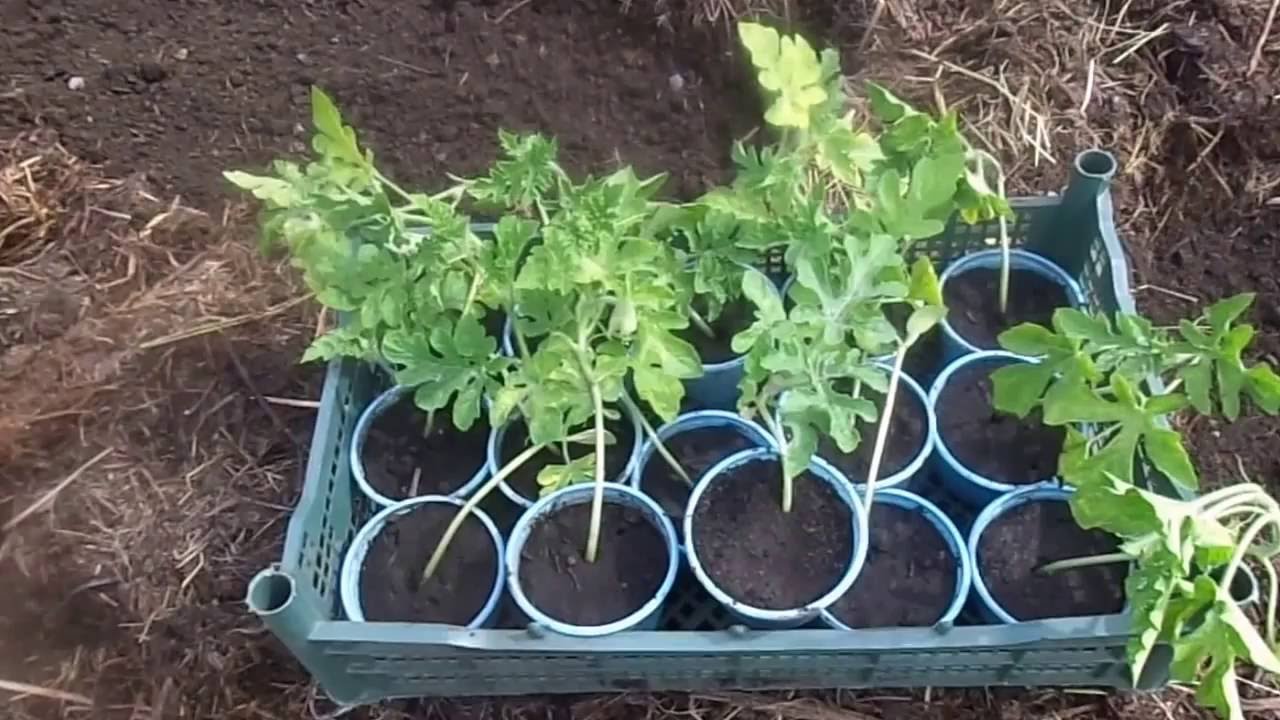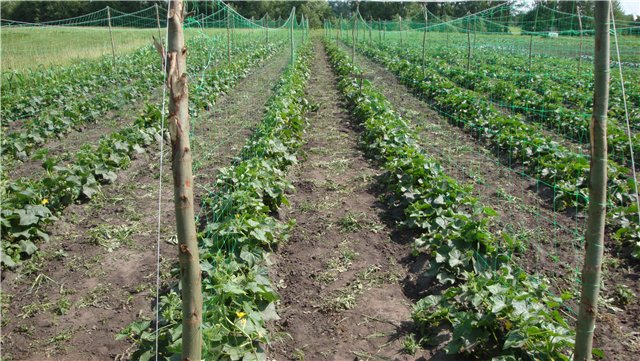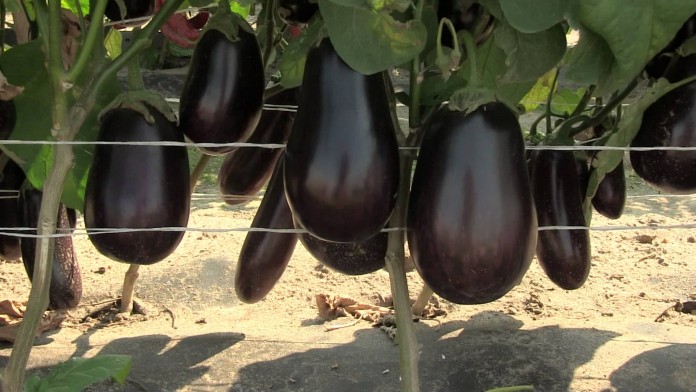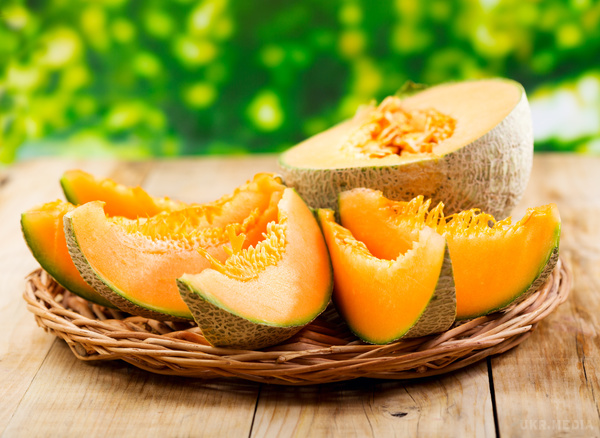Content:
Zucchini are part of the Pumpkin family. They are considered a dietary product that people can consume all year round. They are fried, stewed, caviar is made from the fruit, and preserved for the winter. Vegetables contain many different vitamins and minerals. Therefore, doctors recommend using them for kidney, stomach, heart diseases.
How to plant zucchini in open ground with seedlings
Planting zucchini in open ground with seedlings begins only after the preparatory work has been completed.
First, the farmer chooses the variety of squash he likes. Seeds are being purchased. They are processed in the following sequence:
- make seed soaking;
- roots are pre-germinated;
- transferred to a nutrient medium to obtain seedlings;
- sprouts are planted in open ground.
When buying seeds in specialized stores, there is no need to soak the seeds. They can be planted directly in the germination container. If the seeds are left over from last year's harvest or were bought from hands, then it is recommended to process all seeds with a 5% aqueous solution of salt.
The specimens that surfaced after 10-15 minutes are thrown away, and the remaining ones are dipped in a weak solution of potassium permanganate for 4-5 hours. This procedure destroys fungi and bacteria, improves seed immunity. The prepared seed is placed in a damp cloth or gauze. After 5-7 days, the grains will swell and the roots will be discarded.
To grow at home, you must follow the instructions:
- take plastic cups with dimensions of 100 X 100 mm;
- they are filled with peat, humus or use special soil from a store;
- the planting material is buried by 20-30 mm;
- watered with warm water;
- the appeared bushes are fed at least 2 times before subsequent transplants.
Seedlings must be transferred under artificial lighting. The room temperature is maintained at 23 ° C.
The first feeding is done 9 days after the emergence of sprouts. A solution of 2 g of "Bud" in 1000 ml of water is used. A glass of the mixture is enough for 2 greens. Then, after another 10 days, a second feeding is carried out. Prepare a solution from 1 liter of water, 1 tsp. drug "Effecton", and the same amount of nitrophoska. The bush takes 1 glass of the mixture.
After that, you can already plant them in the spring on the site, where, depending on the composition of the soil, the following preparatory measures are carried out:
- In the presence of peat soils, they are introduced into 1 sq. m of sown area for 1 bucket of clay soil, 2000 g of humus, 2 tbsp. l. fly ash (wood) 1 tsp. potassium sulfate and superphosphate. Then the beds are dug up to a depth of 0.25 m, their surface is leveled, watered with a solution of the Rossa preparation heated to 38-40 ° C (1 tbsp. Of the agent is diluted for 10 liters of water). For 1 sq. m of soil needs up to 3 liters of the resulting mixture. The treated areas are covered with a foil to retain heat and moisture.
- If clay and light loamy structures prevail in the garden, then 1 sq. m of land is introduced up to 3000 g of humus, peat and sawdust, together with 1 tbsp. l. superphosphate and 2 tbsp. l. fly ash.
- With sandy soil per 1 sq.m will take 3500 g of humus and sawdust, 1 bucket of turf, and the same amount of fertilizer as in the previous case.
- Each 1 sq. m of chernozem structures is treated with a mixture of 2000 g of sawdust (wood), 2 tbsp. l. ash, 1 tbsp. l superphosphate.
If a new site is allocated for planting zucchini in the ground with seedlings, it is dug up. Remove all roots, destroy the larvae of pests (for example, the May beetle). After that, up to 3 kg of compost must be added to the ground for the first 12 months, 2 tbsp. l. ash, 1 tbsp. l. nitrophosphate for every 1 sq. m of sown area. The site is dug up, watered with Ross solution.
When can you plant zucchini: timing and temperature
To get an early harvest of zucchini, you need to choose the right time when to plant zucchini so that they adapt well to local conditions.
Experts recommend first germinating seedlings at home, for example, on a windowsill. If there is a greenhouse, then in order to get the shoot of the desired height, you need to wait 25-30 days, and only then transfer it to the site.
Sow culture in places where it warms well with the sun. The optimal time to plant zucchini in the ground is mid-May or June. It is recommended to sow seeds for seedlings from 15 to 24 April or from 1 to 10 May. Based on these data, the gardener himself decides when to plant zucchini in the ground, focusing on local climatic conditions. If there is no task of getting an early harvest, then they sow directly into the ground. Then the sowing date is chosen from May 2 to June 9. The plot is prepared in the same way as with the seedling method.
If the gardener does not fulfill this requirement, then he may lose the entire crop. The plantings will look healthy in appearance, but there will be few ovaries on them. The fruits will practically appear, despite the use of the necessary fertilizers. It is better to plant pumpkin crops in areas where cabbage, onions, red peppers, potatoes, garlic, legumes, and cabbage salads grew before.
How to plant zucchini seedlings in open ground
A novice farmer can learn how to plant zucchini seedlings in open ground from an agricultural handbook or ask an experienced farmer. It is best to do the work on a cloudy day.
Planting holes are made at a distance of 0.9-1.0 m, and they should be dug in one line. In the pits, 1 tbsp is introduced. l. the drug "Effecton". The components are mixed, and then poured with a warm mixture (10 liters of liquid per 1 tbsp. L. Means "Agricola-5"). Use up to 1000 ml of solution for each well. The planting scheme recommended by experts involves the use of ridges with dimensions of 0.6 X 0.7 m.There are 80 cm passes between them.
The depth of the holes is chosen so that the top of the root is 5 mm above the ground.
Each sapling is carefully lowered into a dug hole so as not to damage the delicate roots and sprinkled with earth. Then it is watered with warm water using a watering can with a nozzle.
If the cultivation is carried out by direct planting of seeds in the ground, then 2 grains are loaded into each hole. A segment of 50 mm is left between them. The seed placement depth can vary from 20 to 30 mm.
The grower decides which sowing method to use. The seedling method is most often used if the farmer lives in central Russia or in the northern regions. Direct sowing of seeds is used in the southern regions of the country.
Preparing for freezing
Zucchini are heat-loving plants. Therefore, they are transferred to the site on a warm, early morning or on a cloudy day, when the air and ground are warmed up to 15-20 ° C.
They are afraid of the slightest cold snap. Therefore, in case of the expected deterioration of the weather, it is necessary to cover with material or film. These precautions continue until mid-June, when the last frost is gone.
Cultivation and technologies for increasing yields
Further care for the plantings involves the timely implementation of various agrotechnical measures. Watering crops is carried out on a regular basis. Water is poured under the roots. But it should not fall on the leaves, otherwise, in sunny weather, the zucchini will get burned.
- Until the flowering stage has begun, watering is carried out 1 time in 6-7 days. For 1 sq. m of the sown area leaves from 4 to 5 liters of liquid.
- During the formation of fruits, warm water (20-22 ° C) is poured under the bushes 2 times a week. Increases, and the amount of moisture used is up to 8-10 liters per 1 sq. m.
- The use of a cold substance for irrigation is prohibited. This causes infection of the plantings with fungal diseases.
- It is impossible to water the culture more often because of the danger of exposing the root system. When such a problem appears, the roots are sprinkled with humus and peat mixture (height 50 mm).
- It is better not to huddle the crop or loosen the soil so as not to damage the root structures located near the ground surface.
- After the bushes begin to bloom, it is recommended to manually pollinate them. The gardener picks a male flower, cuts off all the petals from him. Then he traces the center of his female counterpart so that the pollen hits the pistil.
- If there are beekeeping farms in the area where the farmer lives, then insects are attracted for pollination. To do this, dissolve 1 tsp. natural honey in 200 ml of water. The resulting solution is sprayed with planted zucchini. It is better to carry out this procedure in the early morning.
- To increase the yield, root and foliar dressings are used.
- In the first case, fertilizer is first applied before the flowering of the bushes. To do this, use a mixture of 500 ml of mullein and 1 tsp. nitrophoska dissolved in 8-10 liters of warm water. If possible, then instead of the specified drug, use 2 tbsp. l. means "Ross", diluted in a bucket of liquid. The consumption of these fertilizers is 1000 ml per 1 bush.
- The second time, root feeding should be done when the zucchini is blooming. Gardeners recommend a solution of 2 tbsp. l. the drug "Effecton" and 2 tbsp. l. ash dissolved in 10 liters of water. The consumption of the mixture is 1 liter per bush.
- The third time fertilization is applied when the fruits ripen. The composition of the preparation is the same as in the previous case, but the consumption of the mixture increases to 3 liters per stem.
- Foliar dressing is carried out 2 times during the entire growing season. Means "Bud" is dissolved in water (10 g per bucket of liquid). If there is fertilizer "Ross", then it is bred in the amount of 1 tbsp. l. in 10 liters of water. 10 sq. m of the cultivated area, 2000 ml of these mixtures are used.
- Approximately 2 weeks after the first one, a second feeding is carried out with the same fertilizers.
- For the prevention of various diseases characteristic of pumpkin crops, they use special preparations that destroy fungi and bacterial foci. If the zucchini is sick, then you need to dig up the spoiled specimens by the roots, and then burn them outside the garden.
- To eliminate copperhead, the bushes are treated with colloidal sulfur, diluting 50 g of the substance in 10 liters of water.
- With apical bacteriosis, the gardener breaks off the spoiled leaves, and if apical rot appears, then it is recommended to treat the crops with wood ash and crushed eggshells.
- To prevent fusarium disease in zucchini, radish or mustard are planted around the perimeter of the plantings.
- If garden pests are found on the leaves, it is best to exterminate them with modern insect-killing agents. Slugs are scared away by pouring wood ash under the roots of the zucchini. When there are few parasites, they are collected by hand and then destroyed.
Subject to all these requirements and recommendations, any novice gardener can grow a crop on his site.This contributes to an increase in the popularity of zucchini among gardeners.
